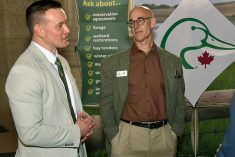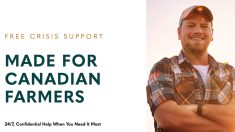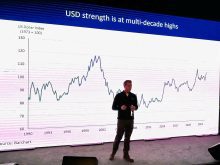Ducks Unlimited Canada, Farm Credit Canada hope to help farmers turn uneconomical farmland into perennial forage
A new program sponsored by Ducks Unlimited Canada and supported by Farm Credit Canada hopes to spur producers to turn uneconomical farmland into perennial forage.
The Marginal Areas Program on the Prairies is open to producers in Alberta, Saskatchewan and Manitoba, with DUC providing financial support to convert unproductive cropland to forage areas.
FCC clients can access up to $2,000 in credit if they take part in the program.
Kristine Tapley, DUC national lead for sustainable agriculture, said the program is focused on cropland that isn’t producing economic benefits to farmers.
Read Also

StatCan stands by its model-based crop forecast
Statistics Canada’s model-based production estimates are under scrutiny, but agency says it is confident in the results.
“Maybe it’s a saline area or for some reason doesn’t have the yield that the rest of the field does. If you’re not seeing a return on investment, those are the areas this program is trying to target.”
While farmers know which areas are not producing, the program provides assistance in finding unproductive farmland.
“The farmer self-identifies acres to enrol. It’s not like we pick or choose where to go in the field.”
She said farmers can stop wasting inputs on areas that aren’t returning yield and they receive an upfront incentive to seed down to perennial cover.
“And you sign a 10-year agreement with Ducks to keep that marginal area in perennial cover.”
Producers can then apply for the FCC annual credit, which runs at $50 per acre up to a maximum of $2,000.
The DUC compensation level will be determined by the land and will vary by province, said Tapley, with provincial representatives from the organization able to help farmers determine the incentive payment.
“It’s typically not easy to establish those acres, which is why we’re identifying them as marginal, and once they are established, then they’ll come out and see they are seeded to perennial cover and you will receive your cheque,” she said.
The specific perennial forage will vary because of differing soil conditions but Tapley added there is a pollinator package available for areas in which such plants will work.
“Because it is a forage blend, you can hay or graze it if you see fit but these are usually small acres here or there that are rounding off the corner of the field or that are just not part of the higher producing areas of the field,” Tapley added. “It makes good business sense for crop growers and the second is that at Ducks, we truly believe the best quality land should be producing food and we should be putting all of the technology and knowledge and resources we have into those good quality acres to produce as much as we can.”
More information on the program can be found at ag.ducks.ca.


















